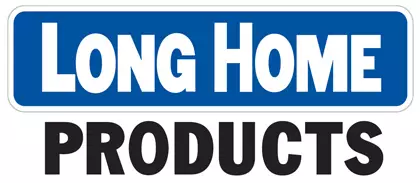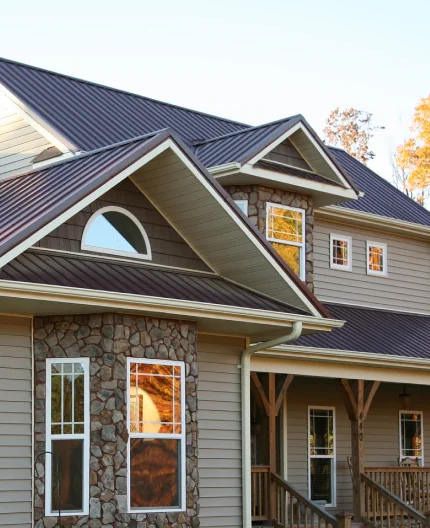What to do About Black Streaks on Your Roof
Published on Thursday May 20, 2021
Seeing black streaks on your shingled roof is actually a pretty common occurrence—though not at all desirable. The entire purpose of your roof is to keep your home and family protected against outside elements and weather, and while black streaks on asphalt shingle roofs won’t cause damage immediately, they can result in your roof aging prematurely.
Here is all you need to know about black streaks on roofs: what causes them, how to remove them, and how to prevent black streaks on roofs from returning
What Causes Black Streaks on My Roof?
Taking care of your roof and keeping it clean are all necessary parts to roof maintenance. The best way to go about this is to fully understand what dirties your roof and what presents a threat. There are several possibilities for why you could have black streaks on your roof, though one of these is by far the most common.
Algae – Gloeocapsa magma
While the black streaks on your roof may look a lot like dirt, soot, or mold growth—which are all possibilities—the most likely scenario is that they’re caused by a type of algae. Algae is the most common reason why your asphalt roof has black streaks on it.
This hardy algae, Gloeocapsa magma, is a blue-green algae that develops a hardened, darker outer coating—resulting in the black stains you see streaking your asphalt roof. This type of algae feeds on any limestone found in your asphalt shingle roofing, making them weaker the longer the algae last.
Additionally, the algae will grow worse every year it’s allowed to stay, growing larger and more noticeable, while also trapping moisture and causing premature aging on your shingles. It’s important to remove it as early as you can, so your shingles don’t rot.
Mold and Mildew
While not nearly as common as algae, streaks and stains on your roof could be caused by mold or mildew. During rainy, humid seasons, botanical growths—like algae, mold, mildew, and even moss—can quickly grow on the surface of your roof.
This often results in the surface of your roof remaining damp, promoting rot, which leads to a worsened case of mold and mildew growth.
Cleaning this off quickly is important to protecting the integrity of your roof, but no matter how tempting it is, don’t come at these discoloration spots with a high-pressure washer. You could end up damaging the integrity of your shingles and worsening the situation unknowingly.
Dirt
Your roof can easily collect dirt and other debris stains from wind, fallen leaves and branches, and other weather elements. Dirt, leaves, sticks, insects, and other debris can collect in and around your gutters and roof valleys.
The best way to clean this is with a safety ladder, shoes or boots with plenty of traction, and rubber gloves. You can gently rake away leaves and sticks, and you can scoop up dirt and grime with rubber gloves.
Always be careful with the cleaning process, especially when using any type of tool. Move a rake from top to bottom on an asphalt shingle roof to avoid pulling any shingles up. Any damaged or missing shingles will need to be replaced immediately to avoid serious roof damage. Any stubborn dirt spots can be rinsed off with a garden hose.
Again, avoid using a pressure washer since you could end up causing more damage to your roof.
If you don’t feel experienced enough or comfortable cleaning your home’s roof, you can consult a professional to handle the project for you.
Are Black Streaks Harmful on a Roof?
As mentioned above, most of the time there are black streaks on roofs because of Gloeocapsa magma growth. This type of algae likes shade and dampness, so their spores settle in on moist, shaded asphalt shingles fairly easily. They also thrive in humid environments and can be found around gutters and downspouts.
The problem is that algae retain moisture. This means they don’t allow the shingles to dry out, which quickly causes deterioration in your shingles, and can eventually cause rot, which leaves the door wide open to mold and mildew growth.
While algae and black stains aren’t immediately a threat to your roof, they can cause huge problems down the road if left alone to thrive. That’s why you want to have the problem addressed as quickly as possible and keep your roof clean, all to help your roof stay strong and avoid any severe damages.
Are Certain Roofing Materials More Prone to Algae?
Algae are most likely to grow in certain environments. They prefer shaded, moist, humid areas, and they prefer to grow somewhere they can get nourishment. You are more likely to find algae growth on wood shingles and asphalt shingles, which is one reason many homeowners opt to go with metal roofs for their homes.
Black streaks on asphalt shingle roofs are the most common, perhaps due to how common this type of roofing is and also how great a place it is for algae to thrive.
If you have an asphalt shingle roof on your home, be sure you check it regularly for any signs of algae growth to help prevent premature aging.
How are Black Streaks on My Roof Removed?
If you have black stains on your roof that need to be removed, the best course of action would be to have a professional come in and handle the job for you. The main reason for this is that getting on your roof to clean or repair shingles is dangerous.
There is a serious fall risk, especially if you don’t have the right safety equipment or experience. In addition, if you don’t have the appropriate skills or knowledge, you could end up damaging your roof more than helping it when you clean, leading to more severe repair costs.
Keep in mind that an asphalt shingle roof should not be power washed since this can easily damage your shingles. Instead, remove algae stains with a thorough, gentle cleaning. However, even if the cleaning job is done perfectly, the stains will likely return and repeated use of harsh cleaning chemicals can shorten the lifespan of your asphalt shingle roof.
A more permanent prevention technique will need to be applied to prevent the stains from returning.
Typically, in cleaning black streaks from an asphalt shingle roof, a mixture of water, bleach, and trisodium phosphate (TSP) is needed. Keep in mind that you may need to protect your plants under your roof since this mixture can damage them.
Using oxygen bleach instead of chlorine bleach is better for the environment, though perhaps less powerful against the algae streaks.
Can Black Streaks on a Roof be Prevented?
If you’re wondering how to prevent black streaks on roofs, then keep this in mind: unless you implement a deliberate prevention strategy, the algae and black streaks are going to come right back. Preventative action is necessary.
One of the best prevention techniques is to install a strip of either copper or zinc-coated sheet metal along each side of your roof, just below its ridge. For this strategy to be fully effective, between two and four inches of the metal must be left visible.
Copper and sheet metal are toxic to algae and prevent regrowth. Copper is more toxic to algae—and therefore more effective—but galvanized sheet metal tends to be far less expensive. In either case, these narrow sheets of metal can be easily attached directly to your roof with nails, or screws and rubber washers.
An alternative option is to install asphalt shingles on your home with algae-resistant technology. It also helps to keep your roof clear of leaves, sticks, and other debris, and to trim any overhanging branches from nearby trees.
Never attempt a DIY roofing project without adequate skills, knowledge, and experience. Roofing projects are always dangerous and require an experienced hand. Consult a professional if you’re looking to add different shingles to your home or strips of metal to help prevent algae regrowth.
Contact Long Home Products for a New Roof
If your algae growth has gotten out of hand or if you’re looking to upgrade your roof with something that’s better at preventing algae, Long Home Products is ready to help.
DIY roofing repairs, maintenance, and replacements might save you in the short term, but if you truly want your roof to last for a decade or more then experienced attention is beneficial. Contact us today to get all your roofing questions answered and schedule your roof replacement.
Interested in Long Home Products?
See our special offers now.
*Excludes labor. Subject to credit approval.
**Excludes labor. Subject to credit approval.
One-day installs contingent upon municipal rules and regulations.
By submitting a form, I authorize Long Home Products to contact me with information abouts its products and services via mail, email, phone and/or text at the contact information provided, even if I am on the national do not call list. Long Home Products may use automated telephone technology to initiate calls to its customers. Calls and in person estimates may be recorded for quality and training purposes.








